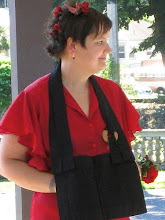Sava - A corpse
Corpse Pose
- Restorative poses help to calm the mind, reduce anxiety
- Helps to integrate and release the body's effort when practiced at the end of asana
- Beneficial for insomnia and fatigue
- May help lower high blood pressure due to calming affect
- There are no contraindications for Savasana, this pose is available to all with modifications for some individuals.
- For women in the last trimester of pregnancy the pose should be modified with props to keep the head & chest upright or lying on the left side.
- People with lower back pain can try several modifications: rest the lower legs on a chair; support the back of the thighs with a rolled blanket; prop knees over a bolster; or keep the knees bent, feet on the floor about 2 feet apart and knees together.
When I have told students the translation of Savasana there are typically cringes and "ewws" from people as they have an immediately negative reaction to the name of this pose. We tend to think of the end of class as "relaxation" and the mind immediately goes to all the negative thoughts of death. It is not easy for the mind to rest on the thought of either our own death or the passing of our loved ones.
Savasana is not named for the anxiety one feels about death, it is named for the corpse itself. A vessel which has lost the energy of life and therefore no longer worries, grieves, loves, hates, or feels anything at all any longer. All of the fears, small and large, that settle deeply into our muscles are forgotten and the muscles release entirely. A corpse has no fear, no shame, no anger and I am reminded of the Heart Sutra, which states, "No eyes, no ears, no nose, no tongue, no body, no mind; no sight, no sound, no smell, no taste, no touch, no object of mind; no realm of sight, no realm of mind consciousness."
A corpse is just a body returning to the earth. We mindfully end practice this way, releasing the body from the effort of asana and returning to the breath. That breath, this is the sweetness of Savasana. For we lay with the complete release and emptiness of a corpse, yet each expiration of the breath continues to be followed by another inhalation.





No comments:
Post a Comment